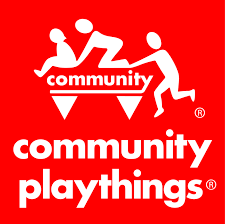Article
Facilitating and Supporting Childrens Play: Suggestions for Teachers
| May 2009Focus on the process (rather than the goal) of play. Ask exploratory questions that help extend the child’s play.
- A child is making honking noises as he pushes a truck.
Teacher: “Where is that truck going?” or “That is such a noisy truck. What is it honking at?” - A child holds a baby doll in the kitchen play area.
Teacher: “What does the baby like to eat?”
Elaborate and build on children’s play or interests. Make comments, offer new and varied materials.
- A child is busy racing and crashing trains.
Teacher: “Those trains really must be in a hurry. I wonder what they are doing.” - For children who enjoy the creative arts table (and to attract children who don’t), offer varied art situations to support explorations, such as sponges, rollers, and different textures to paint on. This builds on children’s interests while extending the types of experiences they have.
- Talk about what the children are doing or ask questions to support and extend their play.
Teacher: “You are washing that baby. She must have been dirty,” “I wonder where that pig is going now. Is he hungry?”
Reflect the emotions children express in their play and actions. This labels and validates children’s feelings.
- A child stomps away from a peer who is using her favorite truck.
Teacher: “It made you really angry when Jacob took your dump truck.” - A child sits quietly in a corner soon after her parent has left. Her head is down, and she is not engaged.
Teacher: “You really miss your mommy. She always comes back to get you. It’s OK to miss your mommy when you’re at school.”
Define the problem. Help children learn negotiation skills. Encourage them to think about alternatives.
- Two children are tugging on a ball.
Teacher: “It looks like you both want that ball. What can you do to work this out?” If the children are too young or lack the verbal abilities to verbalize a solution, the teacher can try to define the conflict and offer an alternative: “It looks like you both want that ball. Here is another one just like it that one of you can use.” - One child grabs a marker away from another child, who then cries.
Teacher: “It looks like there is a problem here. Can each of you say what just happened?” If children are young and lack verbal abilities, the teacher can say, “It looks like you both need that marker. Next time, you can tell Lupe, ‘That’s mine!’” At the same time, she offers another marker. - All of the desired toys are being used in the context of a pretend play situation. If a child looks around for a toy to use but is not engaged, suggest alternatives.
Teacher: “This rolling pin can be a pretend phone” or “ This scarf would make a warm blanket.”
Provide varied materials to encourage exploration and play.
- Provide materials not usually found at home—finger paints, a variety of musical instruments, dress-up clothes, and hammer toys. These allow children to engage in open-ended and exploratory play.
- Supply natural and synthetic materials—feathers, leaves, sand, water, shaving cream (in the water table), Styrofoam, scarves, stickers. These provide a range of opportunities for exploration and play.
- Add “real life” toys, like kitchen utensils, blankets and pillows, and medical kits, that provide opportunities for symbolic play and to work out fears.
Provide open-ended materials for play.
- Wooden blocks, Legos and other building toys, and playdough all provide children with open-ended stimuli that allow them to play as they choose.
- Add props to encourage pretend play—people or animal figures in the block area, baby dolls or plastic dishes in the water table.
Reprinted, with permission, from the National Association for the Education of Young Children. All rights reserved. www.naeyc.org. Young Children, 2003
Topics
Teachers Role as Facilitator
More from Teachers Role as Facilitator






